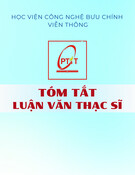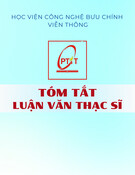
A Study of the Causes and Implications of
Managed Fund Mergers and Liquidations
A thesis submitted in partial fulfilment of the requirements
for the degree of Doctor of Philosophy
Youyou Luo
Bachelor of Actuarial Studies
School of Economics, Finance and Marketing
College of Business
RMIT University
Submitted February 2010
i

Declaration
I certify that except where due acknowledgement has been made, the work is that of
the author alone; the work has not been submitted previously, in whole or in part, to
qualify for any other academic award; the content of the thesis is the result of work
which has been carried out since the official commencement date of the approved
research program; and, any editorial work, paid or unpaid, carried out by a third party
is acknowledged.
Signature:
Name:
ii

Acknowledgements
First and foremost, I am deeply indebted to my senior supervisor Professor Richard
Heaney, whose constant patience, kindness, tireless guidance and immense academic
knowledge nurtured me throughout the course of my PhD program. I am particularly
grateful for his valuable time and efforts spent in reading and correcting the countless
drafts of my thesis. My deep appreciations also go to my second supervisor Associate
Professor Terry Hallahan, who offered thoughtful feedback and advice on my
research and provided me with valuable inspirations through his practical expertise.
I would like to express my sincere gratitude to my colleagues at the Department of
Treasury and Finance. Specifically, sincere thanks go to my Director Bernard Gastin
for his words of wisdom from his practical experience and spending valuable time
reading and commenting on the draft of the thesis despite heavy workload. Also,
many thanks are due to Tim Watson for providing sharp insights for enhancing this
thesis, and James Dennis for providing valuable comments on the thesis and many
interesting follow-on discussions. Last but not least, I would like to thank my
Assistant Director Don Parker for his support in my application for Department’s
study assistance.
Special thanks go to Professor Stephen Brown of New York University for being an
excellent commentator for my paper in the 2007 FIRN Doctoral Tutorial. Also, I
thank the attendees of the 2007 FIRN Doctoral Tutorial, including Professor Bruce
Grundy of the University of Melbourne, Professor Terry Walter of the University of
iii

Technology Sydney and Professor Ross Maller of the Australian National University
for providing invaluable comments, all of which helped shape this thesis. Further, I
thank Professor Tim Fry from my School for his constructive suggestions on the time
period of my research.
I would like to acknowledge the financial support of the RMIT Business Portfolio
Scholarship and the help of the Business Research Office staff in administering my
scholarship. I also enjoyed the kind fellowship of the business research students on
level 13 of the RMIT business building, who knew of great ways to brighten up each
other’s occasionally draining research life.
Finally, this thesis would not have been possible without the constant encouragement,
care and love from my husband and best friend Tsun Ho. I will end by thanking my
parents for their never-ending love and support in everything I do.
iv

Abstract
The impacts of fund mergers and liquidations are significant as the managed funds
industry continues to evolve. This thesis fills a much needed gap in the managed
funds literature through providing insight into causes and implications of mergers and
liquidation of managed funds. The thesis explores this through a number of aspects.
Firstly, the thesis develops a framework for conceptualising the causes of managed
funds termination and describes the differences between strategic mergers, distressed
mergers and liquidations. Then, the thesis investigates the probabilities of fund
termination for Australian, French and UK managed funds, and the relationship
between a fund’s probability of termination and various fund characteristics. Further,
this thesis investigates the determinants for the funds’ termination status and identifies
factors that influence whether a fund is merged or liquidated. Finally, this thesis
investigates the impact of alternative weighting schemes on the performance of
master trusts - which can serve as mitigants for the impact of mergers and
liquidations, specifically addressing the problem of estimation error in forming master
trust portfolios.
Results from statistical analysis show important insights into the causes of mergers
and liquidation of managed funds. It is found that alpha, skewness and fund family
size are significant factors influencing a fund’s probability of termination, and that a
larger fund is less likely to terminate. Also, skewness and family size significantly
influence the termination status of a fund. From these results, this thesis discusses the
implications for regulating mergers and liquidations of managed funds.
v


























